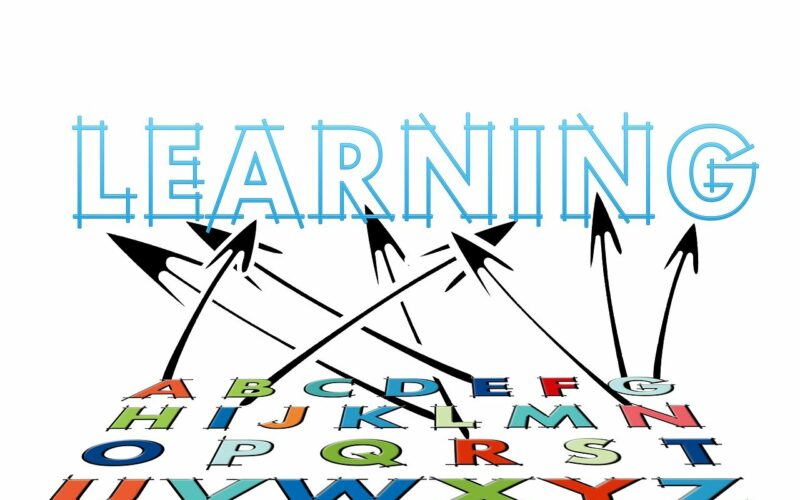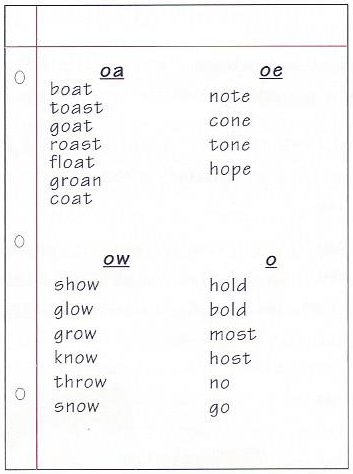Structured Linguistic Literacy: A Phonics Alternative

by Benjamin Merrion
There has recently been a major interest in “The Science of Reading” due to several reasons; one of them being that teachers and parents were noticing that students’ reading scores were dropping during the pandemic. The phrase “Science of Reading” refers to a collection of reading research about what concepts and skills students need to read. These main skills and concepts include phonemic awareness, knowledge of the sound-to-letter relationship, fluency, vocabulary, and comprehension. Although this research has existed since the 90s, the recent investigative journalism of American Public Media’s Emily Hanford with her radio series and a later podcast exposed the differences between what reading strategies have been proven to work versus what has actually been taught in the classrooms about how to read. Referred to as “the most prominent figure in advocacy for big changes in reading instruction”, her work is also another reason why interest in “The Science of Reading” has risen (Borsuk, 2023).
One of the evidence-based components of a good literacy program, as previously mentioned, includes knowledge of the sound-to-letter relationship which is vital for sounding out words. However, it has been assumed by many educators and educational researchers that phonics is the only model for teaching students how to sound out words. On the contrary, there has quietly been a movement towards a new, different, more effective, and more efficient model for teaching the sound-to-symbol relationship.
Structured Linguistic Literacy: A New Model for Sounding Out Words
This new model is called Structured Linguistic Literacy (also known as speech-to-print) by the founders of the different methods that teach this model.
The first method to use this new model is called Phono-Graphix and the other methods that use Structured Linguistic Literacy (SLL) are based on the principles of Phono-Graphix. In 1997, after graduating from college, I joined an AmeriCorps program that placed me in an adult literacy center in Washington D.C. where I taught basic literacy and GED® preparation to adults. After trying various strategies and methods—such as something called the whole language approach (which is focused on reading meaningful text but doesn’t really include specific help with sounding out words) and using phonics with my students—and finding out neither was at all effective, I found the book Reading Reflex. This book contains principles and lessons of Phono-Graphix and I discovered it was the only thing that seemed to work with them. I was later trained in this method in 1998 and have been using it primarily with adult learners ever since.
Concepts SLL Programs Teach That Help Students to Read
SLL methods teach how to sound words out differently than phonics by teaching four main concepts:
- Letters are pictures of sounds.
- A sound can be represented by one or more letters. For example, the letters <igh> stand for what is typically known as the “long i sound” in the word “light.” The technical term for a visual representation of a sound is “grapheme.” With Phono-Graphix, and other SLL methods, we don’t use this abstract term with students; instead we use the term “sound picture.” So, a sound picture is a letter or a group of letters that can stand for one sound.
- There is variation in the code. Most sounds can be shown with more than one sound picture. So, what we typically know as the “long o sound” can be shown six different ways:
b oa t s l ow m o s t t oe n o t e th ough
 To the right is an example of a completed activity called “Mapping and Sorting” that we do to teach this concept. The student is given the below words in a randomly ordered list and has to sort them into the below categories, sounding each word out, and writing the sound picture for each sound as they say each sound out loud. They are told that all the sound pictures stand for the same sound. A demonstration of this activity can be found in this PhonoGraphix Advanced Decoding video at time mark 6:20.
To the right is an example of a completed activity called “Mapping and Sorting” that we do to teach this concept. The student is given the below words in a randomly ordered list and has to sort them into the below categories, sounding each word out, and writing the sound picture for each sound as they say each sound out loud. They are told that all the sound pictures stand for the same sound. A demonstration of this activity can be found in this PhonoGraphix Advanced Decoding video at time mark 6:20.
- Many of the sound pictures are used for more than one sound. As noted in the previous example, <ow> can stand for one sound in “show”, but a different sound in “shower.” Students learn that this sound picture can stand for both sounds and they get practice with trying one sound. If that doesn’t sound like a word or is a word but doesn’t make sense as a word in the story, then they try another sound that sound picture can be.
For example, when reading the word “shown” but they use the sound /ow/ as in “cow” for the sound picture <ow>, they learn to take the sound /ow/ out and put in what is known as the “long o sound” so that it sounds like a word they recognize.
If reading “town” and they use the long o sound for the picture <ow>, that does make a word – “tone,” but in that case, they learn to check the context of the sentence to see if it makes sense. For example: In the sentence, “We all live in a tiny town,” the word “tone” doesn’t make sense.
Skills SLL Methods Teach to Help Students Process Sounds
Since the sound pictures stand for sounds and these sounds form words, three skills need to be explicitly taught so that we can form words from separate sounds: blending, segmenting, and phoneme manipulation.
- Blending, which is pushing sounds together into words. This involves saying the separate sounds /c/, /a/, /t/ and being able to push them together to form the word “cat”
- Segmenting, which is saying each sound individually in a crisp and clear way as much as possible. Some people, when saying consonant sounds, use a “sloppy /u/ sound” which may result in an incorrect reading of the word. For example, the word “sip” is read as “suh-i-puh.” So, when teaching students to segment, we try to help them eliminate that extra sound.
- Phoneme Manipulation, which is moving sounds in and out of words. If a student reads <brown> as “broen,” for example, I would point to the <ow> and say: “You said /oe/ (the “long o sound”) here, but the sound for this in this word is /ow/, so say /ow/ here.” Some students can’t do this and need practice taking the old sound out and putting the new sound in.
Error Corrections: We Learn Best Through Failing
SLL methods also give explicit error corrections so that students understand what they did if they misread a word and are given the information they need to correctly sound out that word.
Before learning this model and a student misread a word, I didn’t know what to say to help guide them through a word. It seemed just giving them the correct word didn’t help them very much at all to read independently, but that’s all I knew how to do.
Now with SLL, I can help guide students through a word, offering them specific help with either blending and the other skills needed to sound out a word. I can also tell them what sound they need to say for a specific sound picture (for example <oa>, <eigh>, etc).
Some phonics programs try to control the process of sounding out words so the student has little chance of failing, but failure—when given the opportunity to correct it—can help students learn and perhaps remember better what they are supposed to do.
Examples of Error Corrections:
Situation: Student reads <simple> as “simply.”
Error Correction: Say, “This (indicating the sound picture <le>) is a way to show the sound /l/. Say /l/ here.”
Situation: Student reads <stamped> as “stamp.”
Error Correction: Say, “You didn’t finish the word. After “stamp,” what’s next?”
Situation: Student reads <house> as “home” in the sentence “We all lived in an old house.”
Error Correction: Say, “I think you guessed this word (indicating <house>). Please sound it out.”
Context and Meaning are Important
In my experience, SLL programs help students learn faster and in a concrete way. Initially, after reading the Reading Reflex book and using it with my students, I thought I had to have my students completely master all the sound pictures to be able to read, so I drilled them. For example, I gave them words with different spellings of the “long o sound” to see if they could remember them, but that wasn’t working.
When I got trained in Phono-Graphix, I asked one of my trainers what to do with one particular student who was particularly challenging because he didn’t seem to remember much from session to session, and she asked me “What does he want to read?” This student wanted to learn to read so that he could take the driver’s test and shop for his parents. When I told my trainer this, she suggested that we start studying for the driver’s test. When we started reading material that he was motivated to read, he began remembering more of the sound pictures because he was learning in a meaningful way.
Also with adults, if possible, it’s much easier to focus on getting more fluent with reading that is focused on one area or topic such as studying for the driver’s exam, reading the Bible, or reading their 12-step recovery literature than reading more general material because they will see words related to that topic or area more frequently. Reading more focused material gives them more opportunities to sound out words related to that topic until they know them on sight, so eventually, they won’t have to sound out as many words. This will help them improve their fluency with those words and in the area about which they are reading and that will also help them start to get more fluent with reading in general.
The SLL model helped me with students who did not seem to cognitively understand how to read by any other way. My current student was kicked out of a program that uses the Wilson Reading System (which is based on phonics and requires a lot of memorization) because he wasn’t making any progress. This student, like my previous student, is also now studying for the Maryland Driver’s Exam and is passing all the practice tests he has taken. With SLL, we can reach more students and help them be successful in their goals. I hope that we in the adult literacy field are willing to learn and eventually be able to teach this new model.
References
Borsuk, A. J. (2023, December 1). Reading expert Emily Hanford says simply buying new curriculum won’t fix what’s wrong with reading instruction. Milwaukee Journal Sentinel. https://www.jsonline.com/story/news/education/2023/12/01/teachers-training-resources-patience-science-of-reading-all-play-role-in-fixing-reading/71664384007/
Hanford, E. (2018, September 10). Hard words: Why aren’t our kids being taught to read? APM Reports. https://www.apmreports.org/episode/2018/09/10/hard-words-why-american-kids-arent-being-taught-to-read
Hanford, E. (2022). Sold a story: How teaching kids to read went so wrong. APM Reports. https://features.apmreports.org/sold-a-story/
Moats, L., & Reading Rockets. (n.d.). Decoding: The basics. WETA. https://www.readingrockets.org/node/30970
McGuinness, D. (1997). Why our children can’t read, and what we can do about it: A scientific revolution in reading. Free Press.
National Center on Improving Literacy. (2022). The science of reading: The basics. U.S. Department of Education, Office of Elementary and Secondary Education, Office of Special Education Programs: https://improvingliteracy.org/brief/science-reading-basics/index.html
Reading Rockets. (n.d.). Basics: Reading comprehension. WETA. https://www.readingrockets.org/reading-101/reading-and-writing-basics/reading-comprehension
Reading Rockets. (n.d.). Basics: Vocabulary. WETA. https://www.readingrockets.org/reading-101/reading-and-writing-basics/vocabulary
Reading Rockets. (n.d.). Fluency. WETA. https://www.readingrockets.org/reading-101/reading-and-writing-basics/fluency
Reading Rockets. (n.d.). Phonological and phonemic awareness: An introduction. WETA. https://www.readingrockets.org/reading-101/reading-101-learning-modules/course-modules/phonological-and-phonemic-awareness
Other Resources
Book: McGuinness, C. and McGuinness, G. (1998). Reading reflex. Fireside.
This book contains the Phono-Graphix Reading Method in the form of lesson plans for helping a parent teach their child how to read. The techniques and principles can be easily applied to teaching adults with little adaptation, though activities reading the stories to practice the words at different levels can be skipped if deemed to be inappropriate for their age. An adaptation for adults to practice reading would be to read text that they want to read at a level as close to theirs as possible, with the learners reading the words they are able to sound out and the instructor can read the words they can’t read.
Videos: Phono-Graphix Book Study Series (for use with the book Reading Reflex)
Online Magazine: Dystinct Issue 13, January 2023
This issue of Dystinct magazine contains articles about Structured Linguistic Literacy and some of the methods that teach it.
Structured Linguistic Literacy Methods: (Note: This is not a comprehensive list. Below are methods accessible for those living in the United States.)
- EBLI -Evidence Based Literacy Instruction
Partial training is available for free but full training is online in the form of videos for $3,000.00. In addition to teaching how to sound out words, EBLI also teaches vocabulary and comprehension which most SLL programs don’t explicitly teach. - Phono-Graphix
The principles of this method can be found in the book, Reading Reflex (mentioned previously) and in the video study series available on YouTube (also previously mentioned).
Online training is available for $795.00, which includes the certification kit materials.
Live, in-person training is available for $800.00 at various locations but participants must make an additional purchase of a certification kit for $395.00.
- Reading Simplified
Online training is available for $43 a month or $387 a year. The basic principles are covered under a preliminary 10-hour course. Although estimated at taking 10 hours to complete, you can work through this course at your own pace watching videos. - Sharpen
Personalized online reading instruction for $24.95 a month only available for each student. A free trial version is available for 7 days. - Sounds-Write
Some webinars are available for free. Full online or face-to-face training is available for $900.00. Face-to-face training may require additional costs such as transportation that is not included in the training fee.
Supplemental Resource
Phonic Books
Books for use with any Structured Linguistic Literacy method. They have books for older readers under the section “Catch Up Readers.”
 Ben Merrion is an Education Specialist at the Adult Learning Department (ALD) of the DC Public Library. He has more than 27 years of experience teaching GED® preparation, adults how to read, and training teachers in Washington, D.C. In addition to coordinating adult literacy outreach events for the library, Ben provides information and referral services to adult learners and adult education programs as well as coordinates, develops, and facilitates best practices meetings and various professional development workshops for the ALD. He was trained in the Phono-Graphix reading method in 1998 and has used it with primarily adult learners.
Ben Merrion is an Education Specialist at the Adult Learning Department (ALD) of the DC Public Library. He has more than 27 years of experience teaching GED® preparation, adults how to read, and training teachers in Washington, D.C. In addition to coordinating adult literacy outreach events for the library, Ben provides information and referral services to adult learners and adult education programs as well as coordinates, develops, and facilitates best practices meetings and various professional development workshops for the ALD. He was trained in the Phono-Graphix reading method in 1998 and has used it with primarily adult learners.